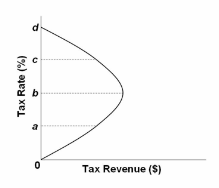Discuss the labor-force participation trends for men and women since 1950
The labor-force participation rates for men have declined somewhat from about 90 to 70 percent, whereas the labor-force participation rates for women have increased dramatically from about 33 to almost 60 percent.
You might also like to view...
When a rent ceiling is imposed in a housing market, the opportunity cost of housing equals the
A) rent. B) market equilibrium rent that would prevail in the absence of a rent ceiling. C) value of the time and resources spent searching plus the rent. D) consumer surplus.
Refer to Table 13-4. Based on the data in the table, which of the following statements is true?
A) The table summarizes Victoria's short-run, rather than long-run, market for plastic vials. B) Victoria should advertise more in order to increase the demand for plastic vials. C) Victoria could be either a monopolistically competitive or a perfectly competitive firm. D) Victoria should shut down temporarily.
Which statement best describes the increase in working capital in the United States from the early 1950s until the 2000s?
a. The average U.S. worker in the late 2000s was working with physical capital worth almost twice as much as that of the average worker of the early 1950s. b. The average U.S. worker in the late 2000s was working with physical capital worth almost four times as much as that of the average worker of the early 1950s. c. The average U.S. worker in the late 2000s was working with physical capital worth almost five times as much as that of the average worker of the early 1950s. d. The average U.S. worker in the late 2000s was working with physical capital worth almost three times as much as that of the average worker of the early 1950s.
Refer to the diagram. The general agreement of most economists is that the U.S. economy today is:

A. at b.
B. at some level below b.
C. at some level above b.
D. at d.